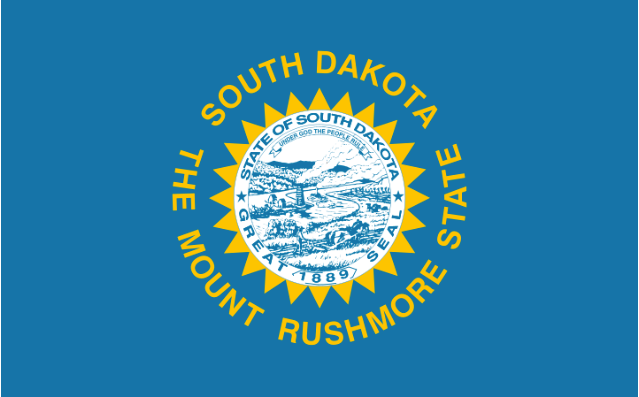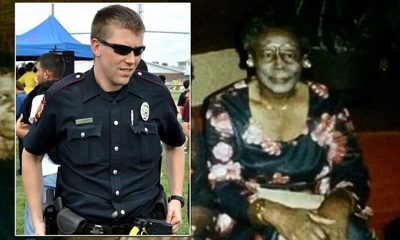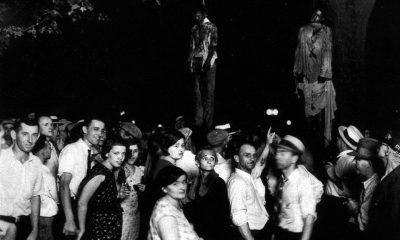United States
South Dakota : Under God The People Rule

South Dakota is a state located in the Midwestern region of the United States. It is named after the Lakota and Dakota Sioux Native American tribes, who historically inhabited the area. South Dakota is the seventeenth largest state by area, but it is only the fifth least populous state with a population of just over 853,000 people. South Dakota is bordered by North Dakota to the north, Minnesota to the east, Iowa to the southeast, Nebraska to the south, and Wyoming and Montana to the west. The state capital is Pierre, and its largest city is Sioux Falls.
South Dakota’s geography is defined by several mountain ranges. Most of the state is covered by prairie grasslands, while the eastern part of the state is covered by the Great Plains. The Black Hills, a group of low mountains in southwestern South Dakota, rise sharply from the surrounding plains. South Dakota has several major rivers, including the Missouri River, which forms the western boundary of the state.
The climate of South Dakota is continental, with hot summers and cold winters. The average annual temperature is about 32 degrees Fahrenheit (0 degrees Celsius).
South Dakota’s economy is based on agriculture and tourism. Agriculture accounts for about 20% of the state’s economy, while tourism accounts for about 2%. South Dakota’s main agricultural products are wheat, corn, soybeans, cattle, and hogs. The state is also a leading producer of sunflowers and pheasant. Tourism is South Dakota’s second largest industry, with visitors attracted to the state’s many national parks and monuments, including Mount Rushmore National Monument, Badlands National Park, and Custer State Park.
South Dakota has a long history of human habitation. The first people arrived in the area over 10,000 years ago. South Dakota was inhabited by several Native American tribes prior to European settlement, including the Lakota, the Dakota Sioux, the Cheyenne, the Crow, and the Mandan. Europeans began settling in South Dakota in the 1800s, and the state was admitted to the Union as the 40th state in 1889.
South Dakota has a long history of racism and discrimination against Native Americans. The state’s Native American population was forcibly removed from their lands in the 1800s and placed on reservations. In the late 1800s and early 1900s, South Dakota passed a series of Jim Crow laws that segregated blacks and whites in public places and prohibited interracial marriage. These laws were not repealed until the 1950s.
South Dakota continues to have a large Native American population, with about 9% of the state’s residents being Native American. However, Native Americans continue to face racism and discrimination in South Dakota today. They have some of the lowest incomes and highest unemployment rates in the state. They also suffer from poor health outcomes, including high rates of diabetes and alcoholism.
South Dakota has made some progress in recent years in addressing racism and discrimination against Native Americans. In 2014, the state passed a law that requires schools to teach about the history and culture of Native Americans. In 2016, South Dakota improved its laws for reporting hate crimes. However, much more needs to be done to address the issue of racism in South Dakota.
Racism continues to be a problem in South Dakota. Native Americans continue to face discrimination and racism in the state. More needs to be done to address this issue.
The history of racism in South Dakota is a painful and deeply entrenched part of the state’s history. While South Dakota is often regarded as a largely rural and isolated state, the impact of racism and discrimination has been felt throughout its communities for generations.
The indigenous peoples of South Dakota, primarily the Lakota and Dakota tribes, have experienced systemic oppression and marginalization at the hands of white settlers for centuries. The forced removal of Native American tribes from their ancestral lands, beginning with the Indian Removal Act of 1830, and the subsequent creation of reservations in the 19th century, set the stage for ongoing violence and oppression.
One of the most notorious examples of this oppression was the Wounded Knee Massacre of 1890. In an effort to suppress the Ghost Dance movement, a spiritual movement that swept through many Native American communities, the US government sent troops to the Lakota reservation in South Dakota. The confrontation led to the death of hundreds of Lakota people, including women and children. The event stands as one of the most tragic examples of the government’s mistreatment of Native American peoples.
Throughout the 20th century, Native Americans in South Dakota continued to face challenges and discrimination. In the 1950s and 60s, the federal government began a policy of “termination” that sought to dissolve tribal governments and force assimilation. This policy was met with fierce resistance from Native American communities, who fought to preserve their cultures and identities.
In the 1970s, tensions between the US government and Native American activists came to a head with the occupation of Wounded Knee by members of the American Indian Movement (AIM). The occupation lasted for 71 days and resulted in the deaths of two Native Americans and one FBI agent. The event highlighted the ongoing struggle for justice and autonomy that Native American communities faced in South Dakota and across the country.
However, racism in South Dakota was not limited to the treatment of Native American peoples. Black residents of South Dakota have also faced discrimination and violence throughout the state’s history. In the early 20th century, a thriving black community existed in the town of Deadwood. However, as the community grew, so too did the racism and discrimination they faced.
In 1917, the state of South Dakota passed a law that required all non-white residents to carry an identification card. This law was used to harass and discriminate against black residents, who were often denied employment and housing as a result. In 1921, a mob of white residents in Deadwood attacked and burned down the black neighborhood, driving many residents out of town.
The racism and discrimination that black residents faced in South Dakota continued into the 20th century. In the 1950s and 60s, the civil rights movement brought attention to the injustices faced by black Americans across the country. In South Dakota, civil rights activists organized protests and demonstrations to demand an end to segregation and discrimination.
However, progress was slow, and it wasn’t until the passage of the Civil Rights Act of 1964 that legal segregation was finally ended in South Dakota. Nevertheless, the effects of racism and discrimination continue to be felt in the state to this day. Black residents continue to face barriers to education, employment, and housing, and the legacy of the state’s discriminatory policies continues to shape the lives of its residents.
The history of racism in South Dakota is a painful and deeply ingrained part of the state’s past. The mistreatment and oppression of Native American peoples, as well as black residents, has had a lasting impact on the communities of South Dakota. It is a persistent problem today.
SUNDOWN TOWNS IN SOUTH CAROLINA
Sundown town, in U.S. history, is a town that excluded nonwhite people—most frequently African Americans—from remaining in town after sunset.
Here is a current list of sundown towns in South Carolina. This list has been created by Tougaloo College in Tougaloo, MS. This list is a work in progress. Some cities have been confirmed as sundown towns and some are listed for other or similar reasons.
Ellenton
Folly Beach
Georgetown
Hamburg
Isle of Palms
Maryville *
Moncks Corner
Princeton
Salem
Shandon

-

 States2 weeks ago
States2 weeks agoPearlie Golden 93-Year-Old Black Woman Shot By Texas Cop
-

 States2 weeks ago
States2 weeks agoTragedy Unveils Racial Tensions Tarika Wilson Story
-

 States2 weeks ago
States2 weeks agoLayers Of Racial Tension The Mario Woods Tragedy And San Francisco Path To Justice
-

 States2 weeks ago
States2 weeks agoLynching Of Thomas Shipp Tragedy Of Racism Echoes Through History
-

 States2 weeks ago
States2 weeks agoThe Killing Of Terence Crutcher And The Fight For Racial Justice

















You must be logged in to post a comment Login